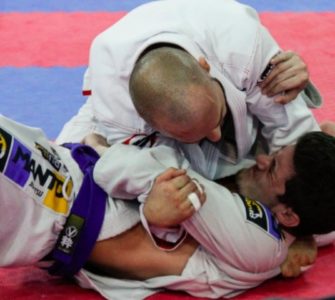Something snapped, popped or cracked? Whatever the sound may be, you know what’s up – you’re injured… What a bummer, right? Well, that’s not going to stop you. You’re even more determined to push yourself, to train through the injury and keep on progressing.
Kudos to you for such an attitude! However, if you want to return to training while still (or even freshly) injured, there are a few things you ought to take into consideration first.
HOW SERIOUSLY INJURED ARE YOU?
Just in case you forgot to „turn on“ common sense… How serious is your injury to begin with? It’s one thing to sprain your ankle and then to continue training. But it’s an entirely other thing to injure your neck, spine or to receive a blow to the head which ends up in a concussion. Sure, the fire in your belly may burn in the same way regardless of the type of injury; but just because you’re driven to go all out doesn’t mean that you should do it.
To continue training after experiencing these types of injuries is not only dangerous, but it lacks any common sense. Do you want to stay healthy, to live a long and prosper life? A life, in which you could train BJJ for years and even decades to come?
If you experience an injury to the neck, spine or a big blow to the head, just stop. Consult your doctor, see what the injury actually is – don’t leave it in the dark, however serious it might turn out to be.
Only after it’s totally healed up should you come back to the mats. Seriously, take care of your health first; if you lose it, then there won’t ever be a chance to roll again.
CAN IT BECOME WORSE?
Even if the injury isn’t life-threatening, you should ask yourself: „If I train through it, what are the chances that it will become worse… And cause further complications to my BJJ journey?“
In other words, if you continue training despite being injured, is it likely that you will hinder your Jiu Jitsu performance and progress down the road? Taking into account the ankle sprain example from above: it might not seem like too much of a risk to train through it. However, what could happen is that you’ll start repeatedly spraining it; each time further weakening the tendons and ligaments.
In the end, your ankle could end up becoming irreparably damaged. And not just that – but your body will struggle to compensate for the body mechanics imbalance by recruiting other muscles in an excess… Which will translate first into an aching knee and then into a stiff, immobile and painful hip(s) in the future.
Therefore, if you want to train through an injury, take all necessary precautions that you do it in such a way that it will not further aggravate itself nor the rest of your body.
DO SOMETHING ELSE
Finally, why do you have to come back to Jiu Jitsu immediately? You can stay in shape with other activities as well, which won’t impact the injured area in the process. Perhaps you could take up swimming for a couple of weeks, until you heal up. Or you could orient yourself towards non-invasive solo drills, weight training or calisthenics… There are endless possibilities!
The point is that you want to stay in shape, and that’s a non-negotiable. However, staying in shape also denotes quality injury recovery. So, don’t be afraid to take upon an activity which will leave the affected area intact – and transform you into a better overall athlete in the process.
Stop Feeling Sore, Tired, And Injured And Start Being Preventative With Your Injuries. It’s Time To Become Bulletproof For BJJ!
- Get grappling-specific exercise routines to build mobility, strength, grip, and core, with or without a gym
- This system was designed by BJJ brown and black belts and professional fitness gurus Joe Worthington and James Tomlinson
- Get different exercises, sets, reps, and more to keep your workouts fresh and dynamic:


















